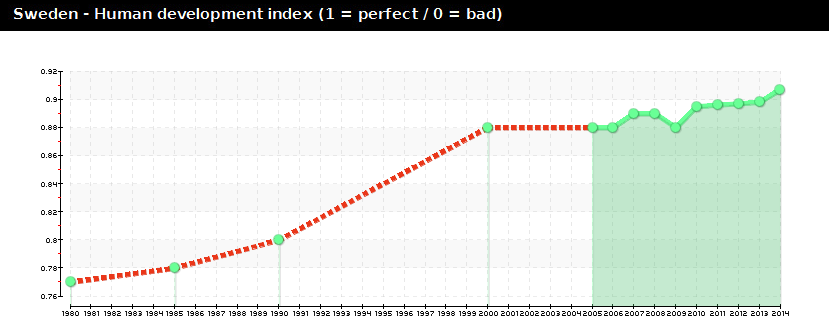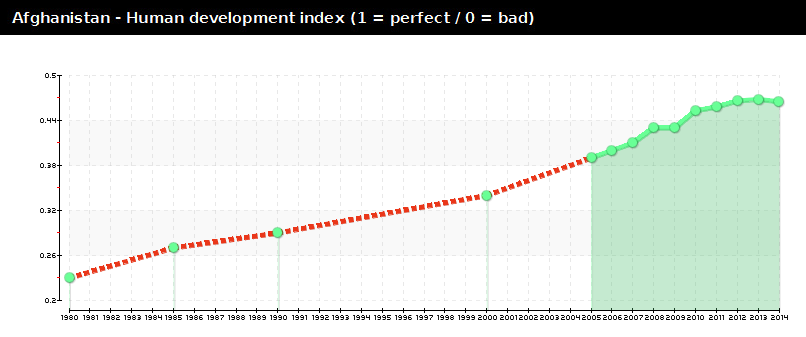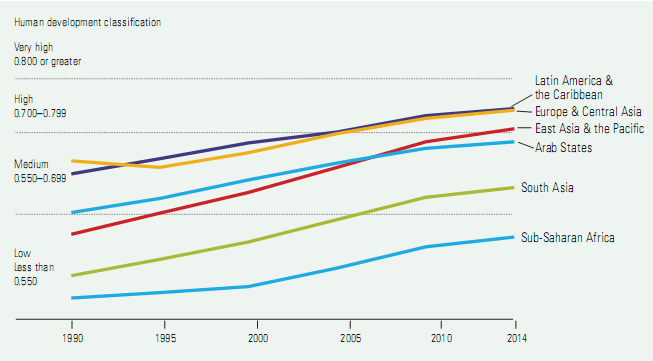Abstract
The Human Development Index (HDI), a measurement of a set of socio-economic indicators, emerged in the last decade of the twentieth century. The introduction of the index has represented a new, forward-looking approach to the understanding of progress. This research is aimed at gaining theoretical insights into the processes of economic development through the HDI. The study had several objectives, including classifying the scientific approaches to the formation and development of human potential, determining the core of the HDI in a system of quantitative and qualitative economic parameters, and determining priorities and prevalent directions of development of the population.
The study results show that an overview of scientific publications has confirmed that the Human Development Index serves as an indicator of the quality of economic growth. In the same way, it reflected the dynamics of the transformation of economic development patterns. The advent of the HDI has allowed tracking economic progress across all developing regions. However, the review of the literature led to the conclusion that not all countries have sufficient resources for independent development; thus, the attraction of capital and labor resources proceeds slowly in their case. The comparison assessment of one OECD country and one non-OECD country (Sweden and Afganistan) has shown that economic and political prosperity of different countries greatly influences the HDI and the three dimensions within it. The high HDI of Sweden is explained by the country’s cooperation with other global stakeholders as well as a solid economic strategy. Afganistan still has a long journey ahead of it to increase its HDI. Therefore, the effectiveness of social and economic development depends on the way regional policy combines measures to align existing imbalances.
Introduction
The Human Development Index (HDI), a notion that emerged in the last decade of the twentieth century, implies a measurement of a set of socio-economic indicators, each of which has been developed to quantify key areas of human development. Several criteria were chosen to characterize the human dimensions of development, such as life expectancy at birth, the adult literacy rate, the level of educational coverage by educational institutions at different levels, and the adjusted real gross domestic product (GDP) per capita (Human development index, 2015). The necessity of including these criteria in the calculation of the total is reflected in the need to be able to evaluate the progress in human development that has been achieved within a certain time interval (for instance, within a year).
The introduction of the HDI has facilitated the representation of a new, forward-looking approach to the understanding of social progress, and it has offered a drastically more extensive indicator than the GDP. The described indicator ensures a comparison of achievements in various directions of human progress (Dunung, 2014). The juxtaposition of marks of longevity, education, and standard of living makes it possible, ceteris paribus, to determine the significance and highest priority of specific human development programs.
The importance of the study is revealed in the idea that the HDI allows the reflection of the quality of economic growth while addressing the most important indicator of the dynamics of the transformation of economic development patterns (Morse, 2013). The relevance of the study area led to the objectives of the research, which is aimed at gaining theoretical insights into the HDI and the processes of human development within the set conditions attached to the progress of market relations.
The purpose of the research is to come up with a general theoretical study of economic role, value, and human potential in economic theory as one of the main factors of human development. Thus, the study has several objectives, which are to classify the scientific approaches to the formation and development of human potential, to define the core of the HDI in a system of quantitative and qualitative economic parameters, to characterize global trends in human development, and to determine priorities and predominant directions of development of the population.
Literature Review
The literature forming the basis of the study is built on the theoretical and methodological approaches and attitudes that have been developed within the area of economic science. In addition, it is based on the research and development of various scientists in the social and economic fields. The study used information from actual resources about the population of various countries and the human development report. To reinforce the theoretical information with the actual data, a study was based on materials from economic and statistical publications of an international organization—the United Nations.
In terms of the theoretical background, Morse (2013) examined and organized the methodological and conceptual attitudes reflected in the HDI, as well as delineated the core of the underlying concepts of the quality of life, the quality of the population, and human capital in the field of economics. The author substantiated an integrated approach to the study of the HDI while dwelling upon the socio-economic and demographic features of development. Dunung (2014) gave the author’s definition of a socio-economic category of HDI based on the aggregation of the existing points of view that have been developed in research studies.
Sever (2013) identified the leading economic factors of human development, taking into account the ongoing transformational change that the world population is undergoing. Dervis and Klugman (2011) addressed the critiques targeted at the three dimensions of HDI – health, education, and the decent standard of living. They argued that despite the low number of dimensions included in the Human Development Indicator, their simplicity was a great advantage. For this reason, there is an option to introduce more complementary measures instead of reducing the range of measures that distort the assessment results.
Method of Analysis
The qualitative method of analysis was utilized to carry out the research. An analysis of structured and unstructured texts was performed to ensure the possibility of gaining as profound an insight as might be possible into the HDI concept and its relevance to economic development. The literature overview consisted of various academic resources and texts, including peer-reviewed articles, books, and the latest data obtained from the publications of a reliable body. Thus, the main data collection tools were literature review and analysis.
To conduct an effective review and analysis of the sources, analytical and comparative methods were used, as well as grouping. Conducting qualitative analysis alone allowed using a comparative evaluation, characterization, and expert assessment of the economic phenomena. If further investigation is needed, it will be possible to expand the research results with the quantitative method and apply relevant techniques to obtain quantitative data.
Analysis
Scientists have confirmed that the Human Development Index (HDI) serves as an indicator of the quality of economic growth. In the same way, it reflects the dynamics of the transformation of economic development patterns. In turn, the quality of a society is reflected in the degree to which all needs of the population in the area are satisfied (Fatah, Othman, & Abdullah, 2012). At present, the socio-economic situation is leading to an emerging difficulty in access to financial resources, employment, health, and education. However, one of the most crucial aspects is the increasing threat of financial instability and the threat of terrorist acts, particularly in Europe.
Categorization
The HDI is composed of three dimensions such as health, the level of education, and income (decent standard of living). The health dimension of the HDI is measured by a citizen’s life expectancy at birth; the education is assessed by finding a mean of schooling years for adults aged 25 and older as well as the mean of expected schooling years for children that start going to school. Lastly, the decent standard of living is measured by finding the gross national income per capita (UNDP, 2015). However, HDI does not fully reflect all aspects of human life and only presents a partial picture of a country’s development. For this reason, many scholars criticized HDI for being incomplete and too simplistic.
To better understand the development of HDI in different countries, it is important to analyze some examples with specific data. We will compare one OECD country – Sweden, and one non-OECD country – Afganistan. Choosing two countries that do not follow the same political and economical route is the most effective way for finding out what influences high and low HDI.


In these graphs, 1 is a perfect HDI while 0 is the lowest. As seen from the examples above, Sweden’s HDI is 0,91, and Afganistan’s HDI is 0,47. Because Sweden is an OECD country, which actively takes participation in collaboration with other countries as to democracy and market economy, its Human Development Index is very high compared to the developing country of Afganistan. Another reason for such a discrepancy in HDIs is the political background of these countries. When Afganistan has gone through decades of struggle for its place ‘under the sun’, Sweden had plenty of time to design reliable domestic and foreign affairs policies that helped it develop to a great extent.
The Parameters of Development
Sever (2013) observed that human potential, in a system of quantitative and qualitative parameters of the population, is used as the holistic approach compared to the notions of human resources, human capital, and quality of life, all of which have been complementing and subsequently replacing each other. In this case, the main argument is that the concept of an HDI enables giving a comprehensive description of the socio-economic, socio-cultural, socio-demographic, and other aspects of human existence, as well as the realization of their potential. Analyzing the methodological approaches to the HDI, it is worth emphasizing that the UN development program, the annually published international report on human development, and the HDI have made a major contribution in the cross-country comparison. In Picture 1, it is evident that the emergence of the HDI has made it possible to track the levels of the positive tendency to progress across all the developing regions, which justifies that the HDI is a comprehensive tool (Human development report, 2015).

Issues and Aspects
Importantly, a no less crucial aspect of the indicator and its implications is the issue of inequality of opportunities available for men and women (Human development report, 2015). The corresponding index of gender-sensitive issues has been developed to take this difference into account; in particular, the index has been adjusted to consider gender equality. As a way to understand how the HDI reflects economic development, related indicators have been developed, such as a way to measure poverty. Another integral indicator displays what reserves are available to improve the HDI, and thus it helps to determine the priorities for human development programs (Human development report, 2015). All the related indicators characterize the level and dynamics of poverty, allowing identification of the populations in need of various types of assistance. Moreover, it can be argued that in any country, high levels of inequality of income and opportunities are an obstacle to human development. Besides the fact that this phenomenon adversely affects the dynamics of the economy to an extreme, hampering its growth and social cohesion, it also limits the conversion of economic growth into social progress.
Describing global trends in human development, it can be claimed that the ratings of countries are significantly different. The top five countries with the highest indexes are Norway, Australia, Switzerland, Denmark, and the Netherlands (Human development report, 2015). These countries are considered to have the highest level of economic development, the most stable economies, and other economic development indicators that are at the highest level. However, almost all the analyzed sources pointed out that even in the top five countries, there is no heterogeneity in spreading of the resources and, accordingly, the figures may not be very relevant.
One of the most important conclusions is that in the HDI concept, the formation of resources for production activities is not of paramount importance, but it does help to improve and support other factors. Accordingly, manufacturing activity is secondary and only speaks indirectly about the economic development of the country. It is also worth noting that when identifying the main differences between the two categories, the human capital theory perceives people as one of the factors of production, while the HDI provides an analysis of the most crucial issues of social development from the perspective of human interests and expanding their capabilities (Fatah et al., 2012). At the same time, the standard of living, education, and human health are not solely the basic parameters of the indicator but the most important factors that contribute to the formation and development of the population. In defining the concept of the HDI in a system of quantitative and qualitative parameters of the population, economic growth performs as a means and not as a goal to the development of the society. Thus, it protects the life opportunities of the current and future generations.
Conclusion
Summarizing the results of the analysis, it can be stated that the best characteristic of the indicator is its ability to present complex socio-economic processes without distorting the data obtained. However, the HDI has certain drawbacks. The indicator cannot respond to such questions as the degree of equality, or characterize other more profound processes in the socio-economic life of the society. In addition, the index is not comprehensive, since it simply reflects the difference in levels of economic development between the countries in the index, but does not facilitate any further assessment (Fatah et al., 2012). The advantages of this measurement are reflected in the fact that it is easy to calculate, it does not require additional expertise, and it is built on a unified database. Moreover, the information is not subject to distortion. Overall, the HDI was developed and introduced to accentuate the human potential and its importance in the development of the country. That is to say that the capabilities of people are more significant than the economic growth.
The review of the literature and the data analysis allowed drawing the conclusion that not all the countries represented have sufficient resources for independent development; thus, the attraction of capital and labor resources proceeds slowly (Human development report, 2015). The comparison of HDIs of two countries, Sweden and Afganistan, has shown that political, economic, and social stability in the country greatly impacts its development. Sweden, which is an OECD country, cooperates with other global stakeholders and, therefore, is capable of increasing its HDI over the course of its development. Its location and access to many resources also influenced its high HDI of 0,91. Afganistan, on the contrary, is a non-OECD country, which struggles politically and economically to this day. Therefore, a low HDI country should pay extra attention to addressing its weakest points, supporting the compromised areas, and look for support from foreign stakeholders that can offer financial and humanitarian aid.
In general, it can be assumed that the objectives of the research have been met. The review and analysis of the current academic sources allowed classifying the scientific approaches to the formation and development of human potential; the core of the HDI in a system of quantitative and qualitative economic parameters has been defined. Therefore, it was possible to determine the priorities and main directions of development of the population.
References
Afganistan – Human Development Index. (n.d.). Web.
Dervis, K., & Klugman, J. (2011). Measuring human progress: the contribution of the Human Development Index and related indices. Revue d’Economie Politique, 121(1), 73-92.
Dunung, S. (2014). Global economies. New York, NY: Atma Global.
Fatah, F., Othman, N., & Abdullah, S. (2012). Economic growth, political freedom and human development: China, Indonesia and Malaysia. International Journal of Business and Social Science, 3(1), 291-299.
Human development index. (2015). Web.
Human development report. (2015). Web.
Morse, S. (2013). Indices and indicators in development. Abingdon, UK: Routledge.
Sever, M. (2013). To what extent is the HDI a good indicator of the relative ‘success’ or ‘failure’ of national social policies? Academic Journal of Interdisciplinary Studies, 2(8), 208-2011.
Sweden – Human Development Index. (n.d.). Web.
UNDP. (2015). Human Development Index. Web.